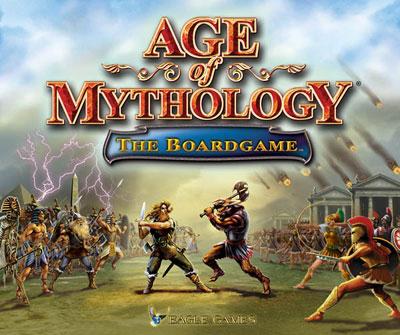There were several items in the news last week that got me thinking about the mythic typology that dominates so much of our thinking:
Ancient Epoch Modern Epoch
Savage-Wild Civilized-Domestic
Primitive Advanced
Simple Complex
Traditional Rational
Faith Reason
Superstitious Scientific
If you are reading this, it’s probably safe to assume you identify with modernity or classifications of the second column. I know that my Buddhist friends do, even as they were telling me last week they were going to see some special historical relics:
Among the cremation ashes of Buddhist spiritual masters, including the Buddha, monks found and preserved sacred relics — small pearl-like crystals called ringsels — that devotees believe embody the knowledge and compassion of the enlightened. “The great meditators spent their lives cultivating a loving heart and great wisdom. These relics embody that spiritual enlightenment,” said North American tour manager Amanda Russell. “Some people look at them in wonder. I experience miracles every weekend. People feel a shift, a transformation, a release of pain or fear — sometimes physical healing. Each relic is from the cremation ashes of a specific master. Each is a crystallized part of the enlightened mind,” Russell said.
These are the same friends who told me last year that their “mindful” Buddhism was not “spiritual” and had nothing to do with “religion.”
Our anti-surveillance friends over at The Guardian matter of factly reported, with no apparent sense for the modern, on Pope Benedict’s resignation:
The former pope Benedict has claimed that his resignation in February was prompted by God, who told him to do it during a “mystical experience”. Breaking his silence for the first time since he became the first pope to step down in 600 years, the 86-year-old reportedly said: “God told me to” when asked what had pushed him to retire to a secluded residence in the Vatican gardens. Benedict denied he had been visited by an apparition or had heard God’s voice, but said he had undergone a “mystical experience” during which God had inspired in him an “absolute desire” to dedicate his life to prayer rather than push on as pope.
Omniscience is not just an NSA attribute. Down south, Slate reports on a measles outbreak:
In Texas, an anti-vaccine megachurch is the epicenter of a measles outbreak that so far has infected 20 people. The Eagle Mountain International Church is led by pastor Terri Copeland Pearsons, daughter of televangelist Kenneth Copeland. (The church is part of his ministries.) Pearsons claims she’s not anti-vax, but the church does promote faith healing, and in August Pearsons voiced concern over vaccinations and autism, a link which has been thoroughly debunked. Kenneth Copeland has promoted anti-vax and anti-science nonsense on his television show in the past.
As a child, I was exposed to quite a bit of Kenneth Copeland; fortunately, it did not make me sick. Over in modern India, Narendra Dabholkar was murdered for muckraking:
For nearly three decades, an earnest man named Narendra Dabholkar traveled from village to village in India, waging a personal war against the spirit world. If a holy man had electrified the public with his miracles, Dr. Dabholkar, a former physician, would duplicate the miracles and explain, step by step, how they were performed. If a sorcerer had amassed a fortune treating infertility, he would arrange a sting operation to unmask the man as a fraud. His goal was to drive a scientist’s skepticism into the heart of India, a country still teeming with gurus, babas, astrologers, godmen and other mystical entrepreneurs.
Dr. Dabholkar’s killing is the latest episode in a millenniums-old wrestling match between traditionalists and reformers in India. When detectives began putting together a list of Dr. Dabholkar’s enemies, they found that it was long. He had received threats from Hindu far-right groups, been beaten by followers of angry gurus and challenged by councils upholding archaic caste laws. His home state, Maharashtra, was considering legislation he had promoted for 14 years, banning a list of practices like animal sacrifice, the magical treatment of snake bites and the sale of magic stones.
Dabholkar’s murder was also covered by The Economist. Though not motivated by these particular reports, astrophysicist Adam Frank laments our “age of denial” in a gloomy NYT op-ed piece:
In 1982, polls showed that 44 percent of Americans believed God had created human beings in their present form. Thirty years later, the fraction of the population who are creationists is 46 percent.
The timeline of these polls defines my career in science. In 1982 I was an undergraduate physics major. In 1989 I was a graduate student. The triumph of Western science led most of my professors to believe that progress was inevitable. While the bargain between science and political culture was at times challenged — the nuclear power debate of the 1970s, for example — the battles were fought using scientific evidence. Manufacturing doubt remained firmly off-limits.
Today, however, it is politically effective, and socially acceptable, to deny scientific fact. Narrowly defined, “creationism” was a minor current in American thinking for much of the 20th century. But in the years since I was a student, a well-funded effort has skillfully rebranded that ideology as “creation science” and pushed it into classrooms across the country. Though transparently unscientific, denying evolution has become a litmus test for some conservative politicians, even at the highest levels.
My professors’ generation could respond to silliness like creationism with head-scratching bemusement. My students cannot afford that luxury. Instead they must become fierce champions of science in the marketplace of ideas.
As Frank also observes, creationism and climate-change denialism are conceptual handmaidens. Welcome to American modernity.


